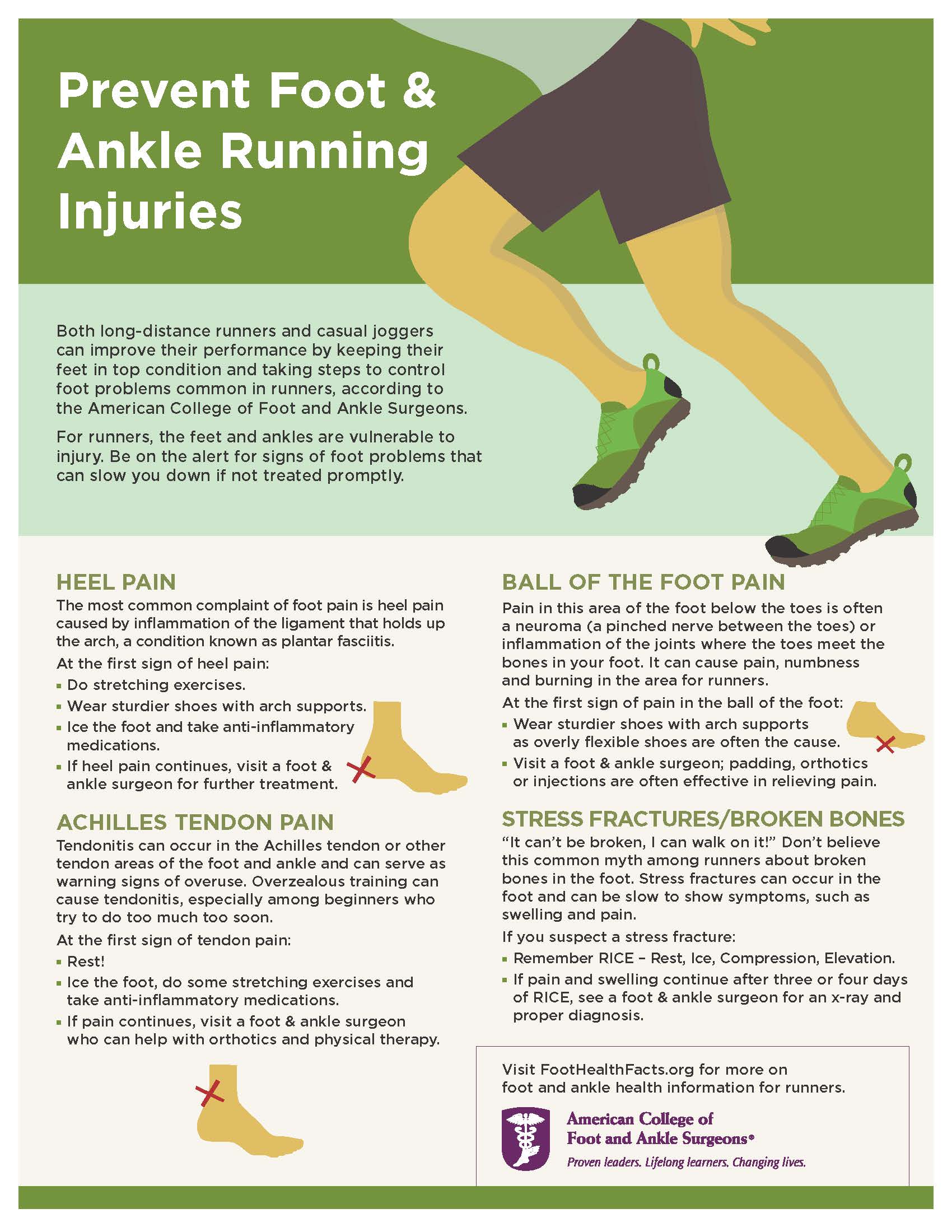Both long-distance runners and casual joggers can improve their performance by keeping their feet in top condition and taking steps to control foot problems common in runners, according to the American College of Foot and Ankle Surgeons.
For runners, the feet and ankles are vulnerable to injury. Be on the alert for signs of foot problems that can slow you down if not treated promptly.
Heel Pain
The most common complaint of foot pain is heel pain caused by inflammation of the ligament that holds up the arch, a condition known as plantar fasciitis.
At the first sign of heel pain:
- Do stretching exercises.
- Wear sturdier shoes with arch supports.
- Ice the foot and take anti-inflammatory medications.
- If help pain continues, visit a foot and ankle surgeon for further treatment.
Achilles tendon pain
Tendonitis can occur in the Achilles tendon or other tendon areas of the foot and akle and can serve as warning signs of overuse. Overzealous training can cause tendonitis, especially among beginners who try to do too much too soon.
At the first sign of tendon pain:
- Rest!
- Ice the foot, do some stretching exercises, and take anti-inflammatory medications.
- If pain continues, visit a foot and ankle surgeon who can help with orthotics and physical therapy.
Ball of the Foot Pain
Pain in this area of the foot below the toes is often a neuroma (a pinched nerve between the toes) or inflammation of the joints where the toes meet the bones in your foot. If can cause pain, numbness, and burning in the area for runners.
At the first sign of pain in the ball of the foot:
- Wear sturdier shoes with arch supports as overly flexible shoes are often the cause.
- Visit a foot and ankle surgeon; padding, orthotics, or injections are often effective in relieving pain.
Stress Fractures/Broken Bones
“It can’t be broken, I can walk on it!” Don’t believe this common myth among runners about broken bones in the foot. Stress fractures can occur in the foot and can be slow to show symptoms, such as swelling and pain.
If you suspect a stress fracture:
- Remember RICE – Rest, Ice, Compression, Elecation.
- If pain and swlling continue after three or four days of RICE, see a foot and ankle surgeon for an x-ray and proper diagnosis.


It’s in point of fact a nice and useful piece of information. I am glad that you simply shared this useful info with us. Please stay us up to date like this. Thank you for sharing.
LikeLike
I’m truly enjoying the design and layout of your site. It’s a very easy on the eyes which makes it much more enjoyable for me to come here and visit more often. Did you hire out a designer to create your theme? Excellent work!
LikeLike
Thanks so much! Our Marketing guru, Monica, did all the work.
LikeLike
I appreciate that this post underlined that a foot and ankle specialist can help in treating our tendon pain. My son has been complaining of pain in his tendon following a sports injury. I will advise him to see a podiatrist to have it checked to prevent further damage.
LikeLike